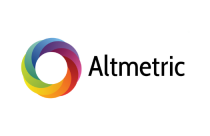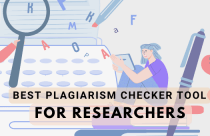ReadCube: Enhancing Scientific Discovery

The main software programs currently available to the scientific community for handling citations and manipulation of literature files are Mendeley, EndNote, ReadCube, Zotero, and Citavi. Some of these are more oriented towards an optimized manipulation of citations and their insertion in a scientific article. As for ReadCube, it mainly deals with the manipulation of pdf files, thereby, enabling their easy annotation and highlighting. The enhanced pdf functionality is now the first choice proposed to readers of most scientific journals available online. Overall, this enhanced pdf format makes a pdf file more lively and interactive and some of its features are already being enabled in some Adobe readers. Author names can be directly checked through ReadCube through a clickable bar on the side that can list the figures or references of the article, which can also be accessed by a click, as most other article metadata. Users can also directly add references to ReadCube through a link on their browser, which would normally take two to three clicks with other reference managers. ReadCube also offers the functionality to obtain new recommendations based on your existing library. ReadCube searches the databases of the publishers it collaborates with and comes up with articles that could be relevant to you on a regular basis.
Limitations of ReadCube
Freeware and Pricing
Even though ReadCube is advertised as free software, the enhanced storage space is mainly for the “Pro” version and some fundamental functionalities are also blocked in the free version. “Importing” pdf files by dragging them from your computer to ReadCube is not activated. Also, there is very little transparency on the price of the Pro version.
Access and Stability
With respect to accessibility, ReadCube shares a limitation with Mendeley: it cannot be accessed without an internet connection, even when using the Desktop version. This can be annoying since it prevents access to your citations or articles while deprived of a decent internet connection. However, Citavi and EndNote do not share this feature.
ReadCube also has some compatibility issues. When trying to launch the “enhanced pdf” visualization of an article online, one gets the message: “Your browser does not support the enhanced PDF”. Moreover, when pressing “Back” in your browser, you are not directed back to the website of the journal, but instead stay on the same page. Hence, ReadCube chooses to trap internet users on their own website.
Finally, multiple users have reported crashes of the software in some rather routine instances. This occurred mostly when trying to synchronize the reference list with the ReadCube database, or when a Word file contained too many references, while still in the range of the numbers present in a standard life sciences paper.
PDF vs. Enhanced PDF
Some other users have concerns about the extra steps involved to actually download the pdf file for an article, a standard task for reading or printing it. On major publisher sites, one has to first navigate through the enhanced pdf file and is then re-directed to the pdf file when asked to print the article. Some bloggers are, therefore, proposing solutions to block the ReadCube functionality in order to return to the quicker access of the pdf file.
Collaborations with Publishers
Over the past few years, multiple publishers have collaborated with ReadCube for their online content. Springer Nature started a trial collaboration with ReadCube in late 2014, and then extended the collaboration to all its content in 2016, renaming the initiative as “SharedIt”. With such an initiative, the publishers made the content directly available to subscribers, thereby enabling content sharing between authors and subscribers.
Highwire publishers also announced in July 2016 that it would make ReadCube available to all its online content. Taylor and Francis announced a partnership with ReadCube in October 2016. As part of that partnership, over four million articles and book chapters from them thus became searchable and present as references in ReadCube. This will also activate ReadCube features on all content from this publisher, such as directly accessible citations, direct access to figures and supplemental material, and easier annotations.
Conclusion
From one point of view, these collaborations are positive, since they mean online accessibility to more content, under a common format. However, with the limitations of ReadCube, many scientists could see these collaborations and spread of ReadCube as a hindrance to accessing scientific literature in the preferred pdf format. Only time will tell whether the social media attitude will be accepted by researchers for their literature, or whether the majority will prefer to stick to the current combination of citations.









